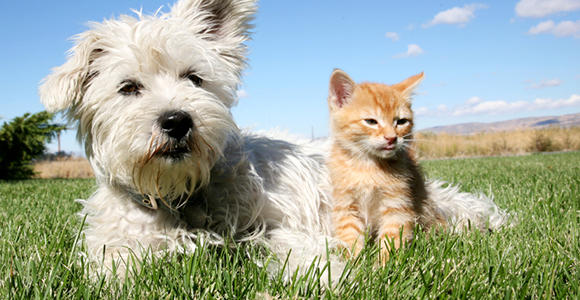
Section Branding
Header Content
How To Help Your Pet Cope With Pollen Allergies
Primary Content

The high pollen count may be causing your cat or dog’s allergies to flare up. Yes they suffer from allergies just as humans do. They can be particularly sensitive to the heavy pollen blanketing the state that is wreaking havoc on human nasal passages. Here is how to tell if your pet is bothered by the pollen and how to treat it.
Watch Out For Excessive Licking, Biting And Scratching
Unlike humans, dogs and cats won’t sneeze or cough excessively when they are allergic to pollen. They lick, bite and scratch themselves a lot. That’s because pollen falls on their fur, ears and the pads on their paws. The pollen is then absorbed into the skin through those areas. Allergic dogs and cats try to soothe themselves by licking, chewing and scratching those affected areas. Too much of this can lead to hair loss, scabbing and ear infections.
According to the ASPCA here are other symptoms to look out for:
- Itchy, red, moist or scabbed skin
- Itchy, runny eyes
- Itchy back or base of tail (most commonly flea allergy)
- Sneezing
- Vomiting
- Diarrhea
- Snoring caused by an inflamed throat
- Paw chewing/swollen paws
How You Can Help Them
A trip to the vet is the best course of action. But here are some preventatives and remedies you can try:
- Wipe your dog or cat’s coat and paws with a damp towel to remove pollen and dander several times a day.
- Give your pet a bath in a hypo-allergenic shampoo and leave in conditioner.
- Saturate your pet's fur with a spray that contains oatmeal and aloe.
- Give your pet fish oil caplets - the omega-3 fatty acids they contain can decrease inflammation which in turn decreases reaction to allergens.
- Administer allergy medication like Benadryl - but make sure you do this under the counsel of a vet as the doses for humans are different than the doses for pets.
Is your pet allergic to pollen or other allergens? Share how you are treating them.





